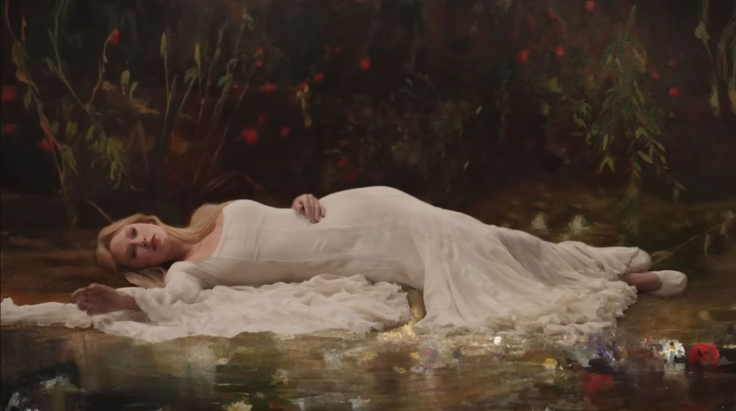The Ophelia Painting Every Swiftie Wants to See: Here's Where to Find It and What Is Tragic History Behind It
Many have painted Ophelia — but for Swifties, Heyser's version echoes the ethereal look Swift recreated in her music video.

A German museum has become the latest pilgrimage site for Taylor Swift fans after eagle-eyed viewers connected a painting on its walls to the singer's latest music video.
At the Museum Wiesbaden, in the western German city of the same name, a painting titled Ophelia (circa 1900) by Friedrich Wilhelm Theodor Heyser has suddenly become the centre of global attention. The rediscovery came after Swift released the video for her new single The Fate of Ophelia, the opening track of her record-breaking 2025 album The Life of a Showgirl.
Within hours of the video's release, fans noticed striking similarities between Swift's opening scene, where she floats serenely in a stream surrounded by flowers, and Heyser's Ophelia, an ethereal Art Nouveau depiction of Shakespeare's doomed heroine.
Since then, the museum has seen a dramatic surge in visitors. 'We are having an absolute Ophelia run at the moment,' museum spokesperson Susanne Hirschmann told media. 'It's been a shock, but a lovely one.'
The Painting: Friedrich Heyser's Ophelia
Painted around 1900, Ophelia is one of the best-known works of Friedrich Wilhelm Theodor Heyser (1857–1921), a German painter associated with Romanticism and early Art Nouveau (Jugendstil). Born in Gnoien, Mecklenburg-Schwerin, Heyser trained at the Prussian Academy of Arts in Berlin and developed a reputation for atmospheric portraits and literary scenes.
Heyser's Ophelia portrays the character after her tragic drowning, where she becomes a dreamlike, floating figure amid water lilies.
Before its unexpected pop culture revival through Taylor Swift's song, the painting was admired mostly by art historians and occasional visitors interested in German Symbolism. Now, it's become a viral attraction with fans taking selfies beside it and tagging posts with hashtags like #OpheliaChallenge and #SwiftieArtTour.
Who Was Ophelia?
In William Shakespeare's Hamlet (c. 1600), Ophelia is the daughter of Polonius and Hamlet's lover. After Hamlet kills her father and rejects her, she descends into madness and ultimately drowns in a stream. Her death, described by Queen Gertrude in Act 4, Scene 7, has inspired generations of artists, from the Pre-Raphaelites to contemporary creators.
Ophelia's story has long captivated painters and writers. The best-known version of her image is John Everett Millais' 1852 painting at London's Tate Britain, often hailed as a cornerstone of Victorian art by admirers.
But for Swifties, Heyser's version is closer to home as it holds visible similarities with the recreation shown by Swift in her music video. The colour of the dress, the angle of the body, and the stillness of the water match Swift's modern interpretation more closely than Millais' dramatic scene.
From Tragedy to Pop Iconography
In Swift's The Fate of Ophelia, the singer reimagines the doomed heroine's fate, replacing death with rebirth. The lyrics describe a noblewoman who 'floated down the river, but rose to write her ending,' transforming the classical tragedy into a metaphor for survival.
Some art commentators suggest that Swift's reinterpretation bridges high art and pop culture, reviving museum interest much like the 'Beyoncé effect' at the Louvre following Apesht* in 2018.
As Hirschmann noted, 'It's really lovely for us that suddenly everybody is talking about art too — thanks to a global star like Taylor Swift.'
The museum has embraced the surge of interest, planning a special Ophelia Evening on 2 November, featuring guided tours and lectures on Shakespeare's heroine, Heyser's painting, and Swift's influence on contemporary art appreciation.
For Museum Wiesbaden, it's an unexpected but welcome chapter in its bicentennial year, one that reminds us how art, even centuries old, can find new life in the digital age.
'Thanks to Taylor Swift,' Hirschmann said, 'it's entered a whole new dimension.'
© Copyright IBTimes 2025. All rights reserved.





















